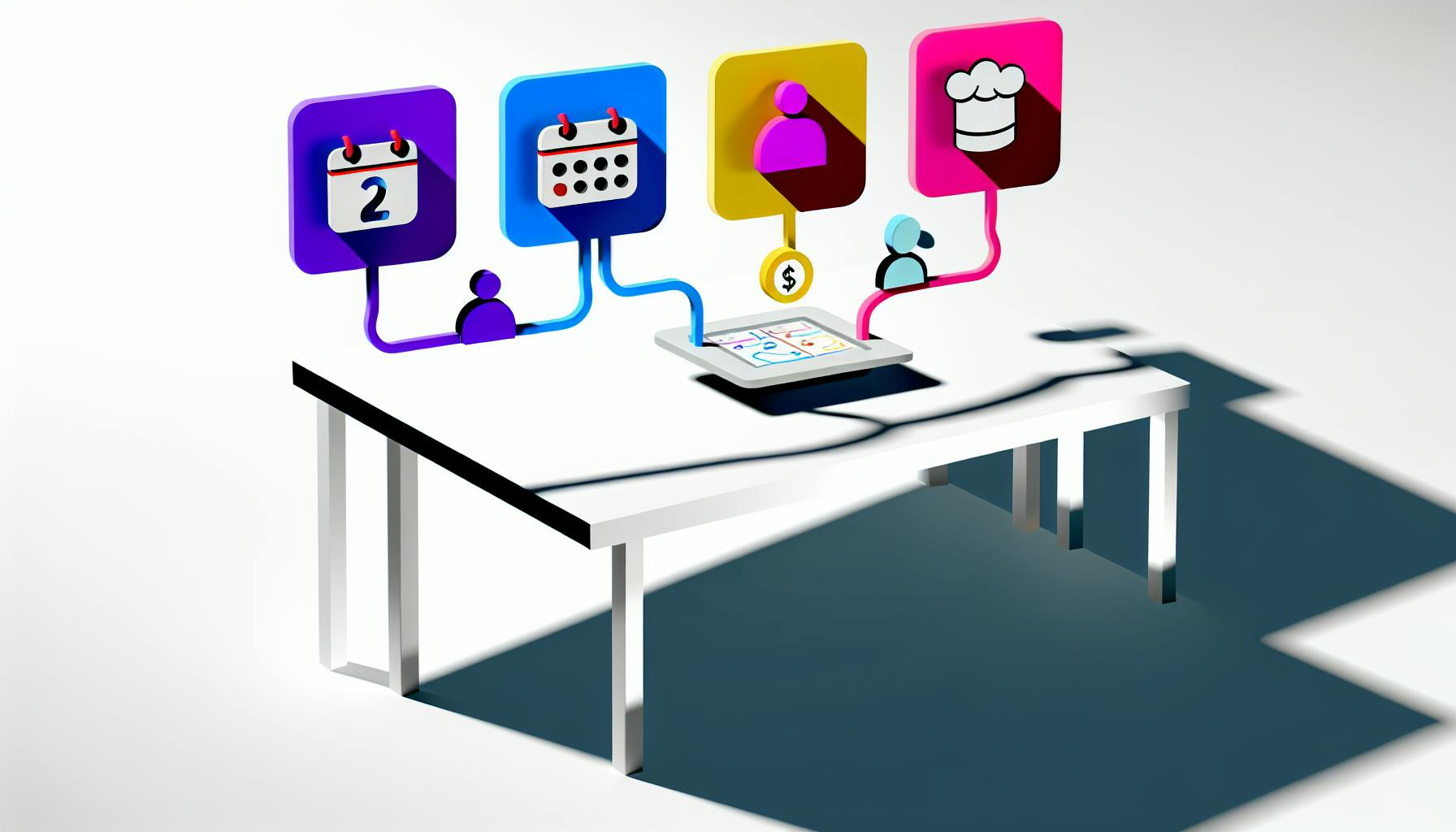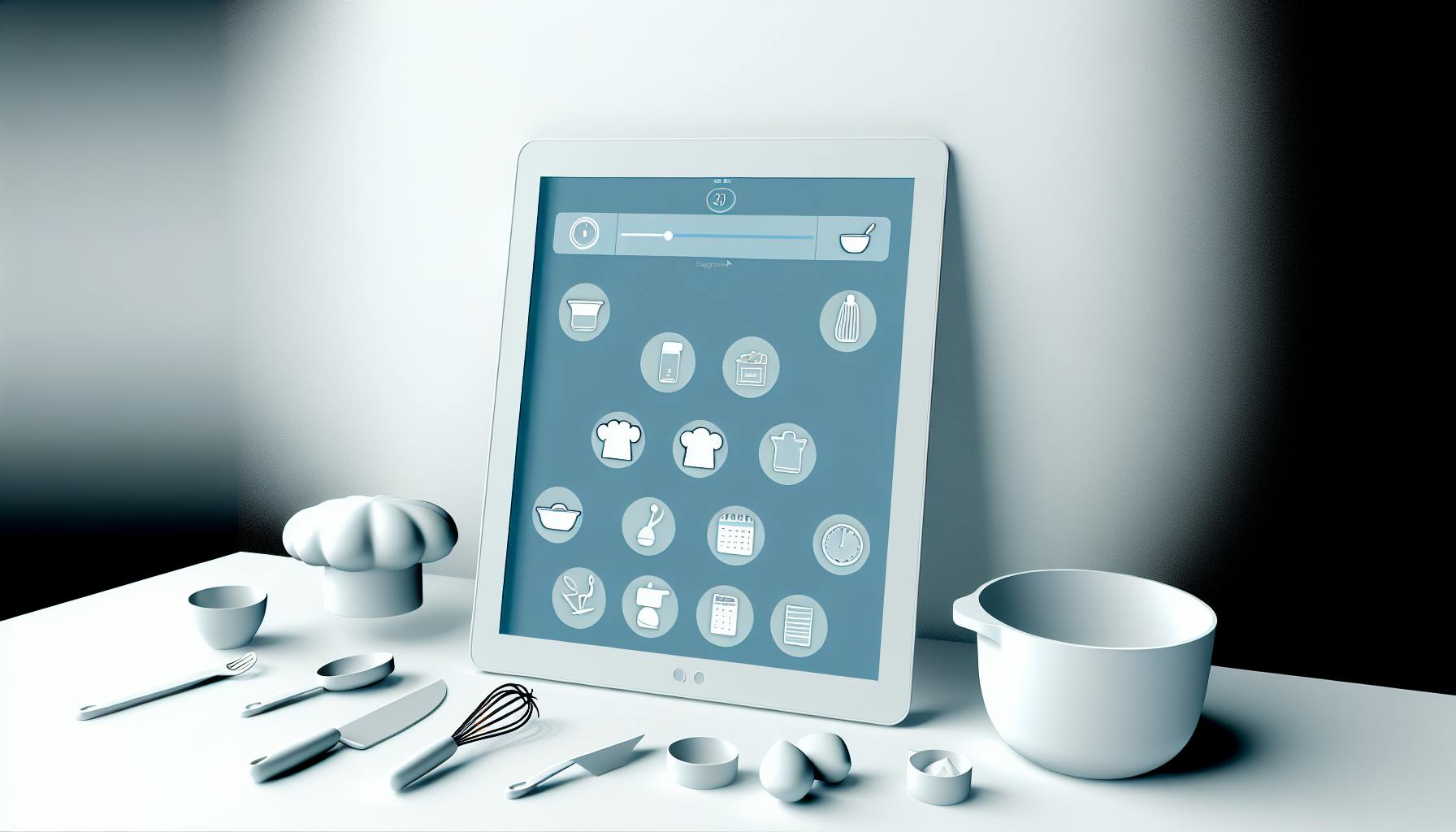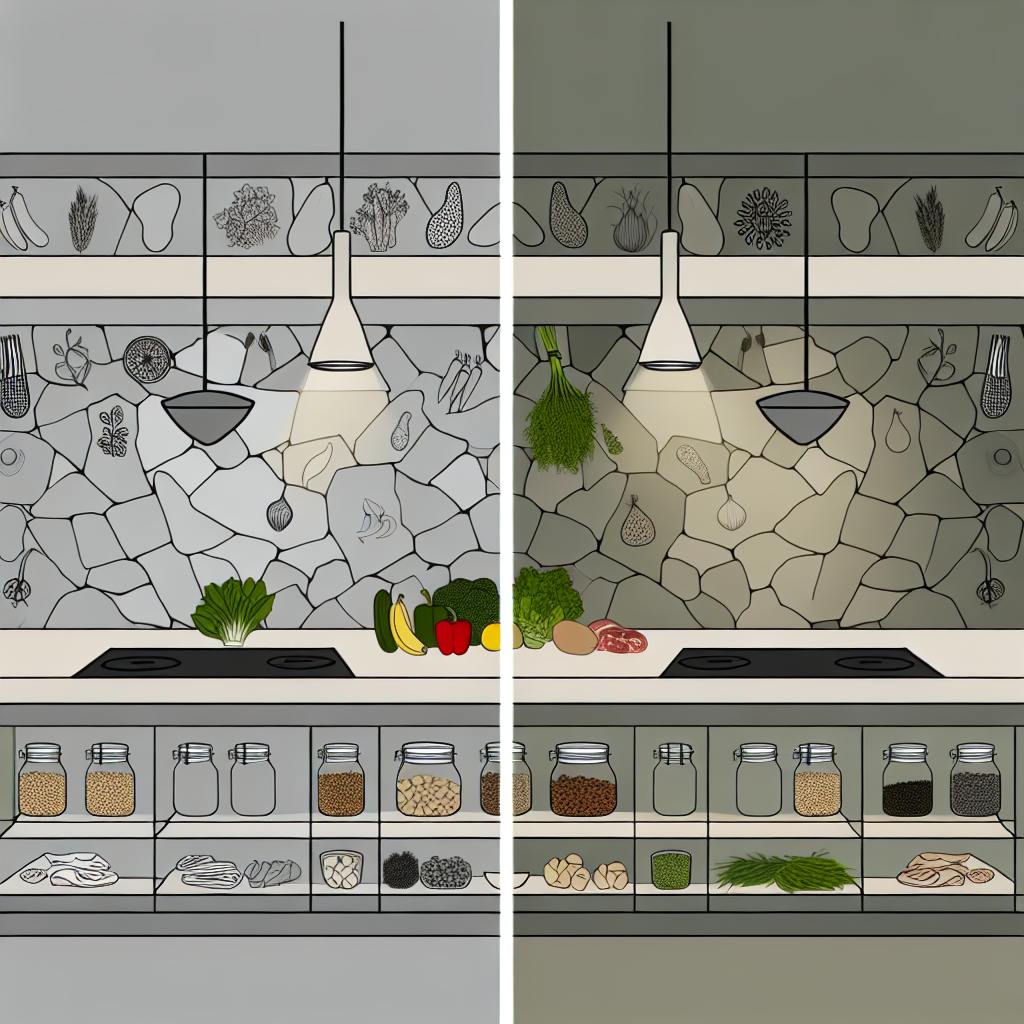Most businesses would agree that managing online food orders efficiently is critical for operational success and profitability.
Implementing a robust online food order management system can help streamline operations, enhance the customer experience, and unlock business growth.
In this article, we will explore the essential features of an online food order system, including order tracking, payment processing, analytics, and more. Discover how the right platform can optimize your meal prep or delivery service while delighting your customers.
Introduction to Online Food Order Management Systems
An online food order management system is essential software for meal prep and delivery services looking to efficiently manage orders end-to-end. This article explores the key features a reliable platform must have to ensure smooth operations and happy customers.
Understanding the Online Food Ordering System Project
The first step when establishing an online food order management system is defining the project scope and requirements. Key considerations include:
- Integrations needed with payment processors, accounting software, etc.
- Custom reporting needs
- Menu and order management needs
- Delivery tracking requirements
Once requirements are set, the software can be customized or built to specification. Frequent testing and feedback loops ensure the system meets expectations before launch.
Maintenance and updates keep the system current as the business evolves. Choosing customizable, cloud-based software ensures it can grow with a business.
The Role of Food Delivery Management Software
Food delivery management software plays a crucial role by:
- Providing a central platform to manage orders from multiple channels
- Offering real-time order tracking and status updates
- Automatically routing delivery orders to drivers
- Generating packing slips, labels, and invoices
This automation and organization is essential for efficient operations and timely deliveries.
Defining the Best Online Food Order Management System
The best online food order management systems have:
- Intuitive, user-friendly interfaces
- Robust order management and CRM features
- Custom reporting and analytics
- Flexible menu management
- Inventory tracking capabilities
- Reliable uptime and responsive support
Choosing software that meets a business' specific needs is key, rather than opting for a generic system.
Exploring the Restaurant Ordering System
A restaurant ordering system allows customers to order and pay directly from their tables via tablets. Benefits include:
- Reduced wait times
- Increased order sizes and sales
- Improved accuracy
Staff also save time taking orders manually. However, the cost of tablets and software licenses can be prohibitive for some restaurants.
Integrating a Table Ordering System for Restaurants
To implement a table ordering system, restaurants need:
- Reliable tablets and charging stations
- Intuitive software for customers
- A backend system to manage orders
- Proper staff training
When executed properly, these systems enhance customer experiences and allow staff to focus on service.
Core Features of an Effective Food Ordering System
Delving into the essential functionalities that make up the backbone of an efficient online ordering system.
User-Friendly Food Order Form Templates
The online food order management system should provide customizable order form templates that businesses can tailor to their specific offerings and branding. These templates allow customers to easily view menu items, customize orders, and checkout securely. Key features of effective order form templates include:
- Intuitive category-based browsing for menu items
- Option to select quantities, special instructions, and customizations
- Allergen and dietary preferences sections
- Calculation of total order costs and applicable taxes
- Secure checkout with saved customer data for faster repeat orders
Customizable templates enable businesses to match the look and feel with their brand image. They also simplify the ordering process for customers, reducing cart abandonment.
Trusted Payment Processor Integration
Integrating with trusted third-party payment processors like Stripe and PayPal is vital for secure, reliable transaction handling. Key aspects include:
- PCI compliance to store and transmit card data securely
- Support for popular payment methods like cards, Apple Pay, Google Pay
- Automatic order confirmation and receipts after successful payments
- Fraud analysis and chargeback management protections
Choosing certified payment partners reduces risks and inspires customer trust during checkout. Automated post-payment processes also eliminate manual order handling efforts.
Efficient Order Management and Tracking
Once an order is placed, the system should provide real-time tracking and back-office functionalities like:
- Order timeline tracking with status indicators
- Assignment to delivery drivers or routes with location tracking
- Label printing for meals with ingredients, allergens, customer details
- Packaging slip printing listing items in an order
- SMS and email notifications to customers on order status
Robust order tracking and management enables streamlined order processing, packaging, and delivery operations. Customers can also self-serve order status through their accounts.
Cloud Storage Solutions for Order Data
All order data should be stored securely on cloud infrastructure providing:
- Scalable and redundant storage as order volumes grow
- Automated daily backups for disaster recovery
- Access control to order data per user roles
- Audit trail capturing order lifecycle events and changes
Cloud storage future-proofs the business as scale increases while also securing critical order data. Granular access controls also prevent unauthorized access.
Email Marketing and Autoresponder Integrations
Integrating email marketing and autoresponder platforms like Mailchimp, Drip, or ConvertKit can bolster customer engagement through:
- Automated post-order review requests and satisfaction surveys
- Promotional and seasonal campaign emails to drive reorders
- Email sequences for customer win-back and re-engagement
- Targeted segments for personalized promotions to subgroups
Scheduling personalized email follow-ups and promotions after the initial order helps nurture customer relationships and improve long term value.
The online food order management system forms the digital backbone enabling streamlined order taking, payment processing, order tracking, and delivery operations. Choosing a solution with robust core functionalities ensures efficient systems that delight customers and provide operational efficiencies.
sbb-itb-3666cb4
Enhancing the Customer Experience with a Robust Online Ordering System
An online food order management system can transform the customer experience by offering convenience, transparency, and personalization. Here are some key ways the right system empowers meal prep services to deliver superior satisfaction.
Creating a Seamless Mobile Ordering Experience
A free mobile app enables customers to order on-the-go with their smartphone or tablet. This provides flexibility for busy customers and allows them to order from anywhere. Features like mobile payment integration, order tracking, location services, and notifications create a smooth, seamless experience. This convenience incentivizes repeat business.
Real-Time Order Updates and Tracking
Order tracking allows customers to monitor their order status in real-time. They receive live updates as their order moves to confirmed, prepared, en route, and delivered. Push notifications alert them to status changes. Tracking brings transparency to the process so customers know what to expect.
Personalized Customer Interactions with Autoresponders
Autoresponders automatically send confirmations when an order is received, updates during preparation and delivery, and follow-ups after completion. These emails can be personalized with customer names and order details. Setting up post-delivery surveys also enables meal services to collect feedback. This personal touch strengthens customer relationships.
Providing PDF Receipts or Invoices
Digital receipts eliminate paper waste while giving customers documentation for their orders. PDF receipts containing order summaries get sent directly to customers upon purchase. Meal services can also send digital invoices for corporate or catering clients needing to process payments. This facilitates record keeping.
Loyalty Programs and Special Offers
Loyalty programs integrated into the ordering system reward returning customers with points, discounts, or free items. Services can also send exclusive promos to loyalty members. This incentivizes repeat purchases and helps services retain their best customers. Limited-time coupons can attract new customers.
Optimizing Operations with Advanced System Features
Inventory Management Integration
Integrating an online food order management system with inventory software is critical for meal prep businesses to maintain real-time visibility into ingredient levels. By syncing in real-time, the system can automatically update menu availability based on stock levels, preventing overselling of menu items. Key benefits include:
- Prevent order errors and substitutions by knowing exact inventory levels
- Optimize food costs by reducing waste from spoilage
- Streamline supply chain management through forecasting and automated reordering
- Gain insights into most popular ingredients to inform purchasing decisions
To maximize efficiency gains, integrations should:
- Connect with leading inventory software platforms via API
- Offer customizable reorder points and alerts
- Provide detailed reporting on inventory usage over time
With robust integration capabilities, restaurants can reduce operational costs, limit customer disappointments from out-of-stocks, and make data-driven decisions around purchasing and production.
Data Analytics for Strategic Decision Making
Sophisticated data analytics and reporting functionality are imperative for restaurants to harness insights around menu planning, customer preferences, pricing strategies, and more. Key analytical features include:
- Customizable sales reports by category, menu item, time period, and other parameters
- Customer order history tracking to identify bestselling items and trends
- Menu performance metrics such as profit margins, food costs, and sales volumes
- Demographic data and order frequency statistics to optimize marketing
- Easy export to accounting software for financial reporting
By leveraging data analytics, owners can determine optimal pricing, customize recommendations and upsells, streamline costs, minimize waste, and make informed, strategic decisions to improve profitability. The system should provide integrated tools rather than requiring external analysis.
Automated Routing for Delivery Efficiency
For restaurants that offer delivery services, optimizing driver routes is critical for fast order fulfillment. Robust order management systems provide automated routing to:
- Calculate optimal routes based on traffic, road infrastructure, and other variables
- Enable real-time order assignment to drivers based on proximity and capacity
- Integrate with GPS tracking to monitor delivery status and ETAs
- Provide turn-by-turn navigation for drivers to facilitate timely deliveries
By leveraging algorithmic routing capabilities, restaurants benefit from more deliveries per shift, reduced mileage costs, and higher customer satisfaction from punctual deliveries.
Scalable Cloud Infrastructure
A cloud-based order management platform enables restaurants to scale operations without expensive on-site infrastructure. Benefits include:
- Pay only for the computing resources used rather than overprovisioning
- Quickly expand storage and bandwidth as order volumes increase
- Ensure 99.9% uptime reliability without dedicated ops personnel
- Regular feature updates and security patches without manual IT work
Furthermore, the software should provide an open API for custom integrations, allowing restaurants to easily connect other business systems to their ordering platform. By leveraging the flexibility of cloud infrastructure, restaurants can meet demands during peak periods while keeping costs low.
Comprehensive Reporting Tools
Data-driven insights are only useful if restaurants can easily access and interpret analytics through intuitive reporting tools. Essential features include:
- Custom reports builder with drag-and-drop interface
- Interactive charts and graphs for data visualization
- Scheduled report automation to stakeholders
- Report formatting options including PDF, CSV, and Excel
- Commenting tools for report analysis and annotation
Robust reporting functionality lets owners create specific reports tailored to their business needs. By consolidating analytics into clear, visual reports and enabling data sharing across the organization, restaurants can democratize access to intelligence and drive better decision making.
Conclusion and Key Takeaways
This article explored must-have capabilities for an online food order management system plus ways this software benefits small meal prep and delivery businesses. Key takeaways include:
Necessity of Core Functionalities
An online food order management system needs to have:
- Intuitive order placement features like customizable online order forms, saved customer preferences, and easy reorder options to drive sales - Seamless payment processing integrations for secure credit card and mobile payments to build trust - Robust food order management software for tracking, reporting, and order workflow automation to save hours
These core functionalities are essential for efficiently managing orders end-to-end.
Impact on Operational Efficiency
Automating repetitive tasks with an online food order management system leads to:
- Time savings from automatic order notifications rather than manual customer follow-ups
- Increased order accuracy by pulling customer data and preferences from integrated platforms
- Faster order fulfillment using barcode scanning, custom labels, and real-time status updates
Process automation and system integration drive operational performance.
Enhancement of Customer Experience
An online food order management system should also provide:
- Easy reordering based on order history and saved customer preferences
- Real-time order tracking with status notifications via SMS or email
- Personalized promotions and special offers based on purchase data
These capabilities lead to better customer engagement and loyalty.
Contribution to Business Growth
With robust analytics and reporting, an online food order management system empowers businesses to:
- Identify best selling items and optimize menus based on metrics
- Understand customer purchasing patterns to target promotions
- Pinpoint operational bottlenecks limiting order volume
- Quantify business growth week-over-week and month-over-month
Data insights unlocked by the software lead to smarter decisions and accelerated revenue gains.



